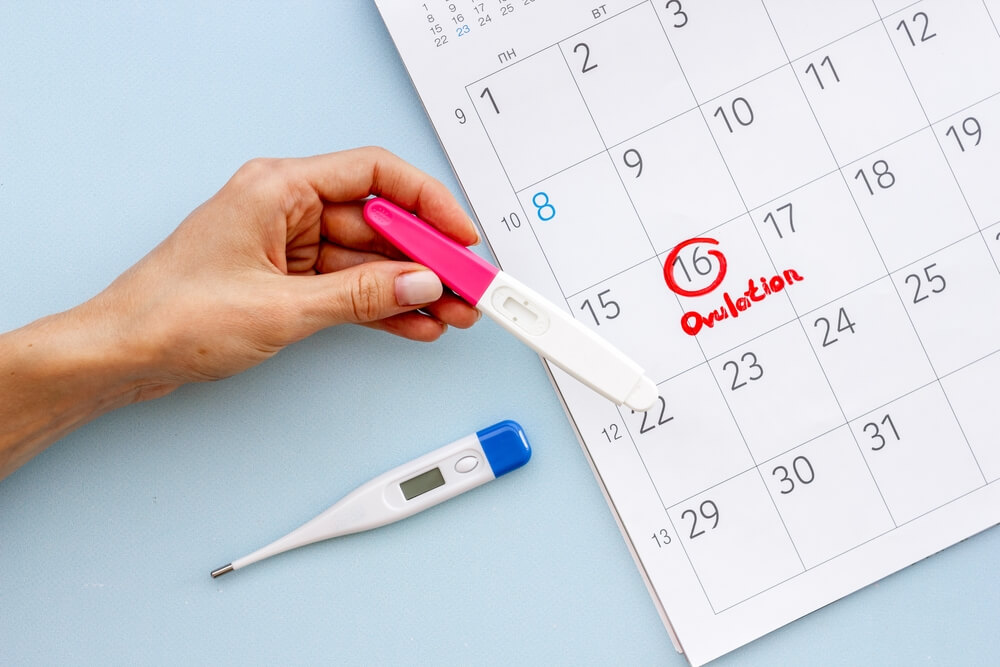We’re all familiar with the ovulation process, but how well do we actually understand what’s happening when it takes place? Cervical mucous changes and or light spotting are two ovulation symptoms women commonly experience. Yet how your body changes during ovulation is much more complex than what is seen on the surface.
At South Miami OB-GYN Associates, we want to help you understand your body and your reproductive system. If you are trying to become pregnant or would like a general reproductive consultation, schedule an appointment with one of our board-certified obstetricians in South Miami or Downtown Doral today.
What Is Ovulation?
Ovulation is the reproductive process of releasing a mature egg (also known as an ovum) from your ovary. Once released, the egg travels down the fallopian tube, where it may be fertilized by sperm. This typically occurs once a month, around the middle of the menstrual cycle, although lifestyle factors can vary the exact timing for each woman.
While ovulation itself only lasts for 12 to 24 hours, the window in which a woman can conceive is about six days—the few days before ovulation and for several days after. An ovulation test and other methods of tracking can be used to know precisely when ovulation is occurring.
Ovulation Symptoms

Ovulation is an important part of the reproductive cycle as it is necessary for conception to occur. A woman can tell she is ovulating by observing one or several common ovulation symptoms.
Signs and Symptoms of Ovulation:
- Bloating
- Tender breasts
- Mild cramps
- Increase in discharge before ovulation
- Cervical mucous changes
- Light bleeding (known as spotting or ovulation bleeding)
Phases of the Menstrual Cycle
Knowing each phase of the menstrual cycle and sequence helps in understanding the processes taking place in your body.
- Menstruation: Also referred to as your period, this is the widely-known phase where the lining of the uterus is shed, resulting in vaginal bleeding for several days.
- Follicular phase: During this phase, the ovaries begin to prepare for ovulation. This is done by developing the follicle that holds the mature egg that will be released.
- Ovulation: The mature egg, held within the dominant ovarian follicle, is released. This is when external symptoms, such as ovulation bleeding, can occur.
- Luteal phase: The egg travels to the uterus, where it will either be fertilized by sperm or not. If not, the uterine lining begins to break down, and menstruation begins.
Bodily Changes During Ovulation
Specific changes begin in a woman’s body to prepare for possible fertilization and pregnancy. Here are the most significant processes taking place before the luteal phase.
Follicle Development (The Follicular Phase)
Ovarian follicles are where premature eggs are stored until they are mature enough for release. During the first 14 days of the menstrual cycle, the follicle with a mature egg begins to grow and become more dominant, so the egg will release from it as the premature egg follicles shrink.
Increase in Estrogen
As the mature follicle develops, it releases increasing levels of estrogen. This hormone helps thicken the uterus lining to prepare for the potential implantation of a fertilized egg.
Release of an Egg
The mature egg is released from the ovary and travels down the fallopian tube toward the uterus, where it prepares for fertilization.
Changes in Cervical Mucus
The cervical mucus becomes thin, slippery, and stretchy, making it easier for sperm to travel through the cervix and into the uterus to fertilize the egg.
Body Temperature
After ovulation, the increase in progesterone levels during the luteal phase cause a woman’s basal body temperature to increase, which can be measured using a basal thermometer.
The Luteal Phase
The luteal phase occurs in the second half of a woman’s menstrual cycle, right after the ovulation process. During this phase, the corpus luteum produces progesterone to prepare the uterine lining for pregnancy. If the released egg is not fertilized, the corpus luteum will break down, progesterone will drop back down to normal levels, and the lining of the uterus is shed, resulting in menstruation.
How to Track Your Ovulation Cycle
If you want to have a better understanding of when you are ovulating or if you’re trying to conceive, learning how to track your cycle is vital. There are several methods from which a woman can choose for ovulation tracking.
Methods for Tracking Your Cycle:
- The Calendar Method
- Ovulation Tests on LH Levels
- Basal Body Temperature (BBT) Charting
- Cervical mucus tracking (particularly in conjunction with the BBT method)
If you begin tracking your cycle, it may also be helpful to record dates and symptoms in a notebook in conjunction with an ovulation test or other methods. Since ovulation occurs only once a month, you may forget small details from one cycle to the next unless it has been recorded.
When to Visit Your OB-GYN

Sometimes an ovulation process can be delayed or skipped altogether. This is not necessarily cause for immediate concern. Natural variations in a woman’s cycle, as well as malnutrition, stress, and other factors, can cause a woman’s ovulation to fluctuate. In some cases, however, delayed or skipped ovulation can indicate an underlying medical issue, such as polycystic ovary syndrome.
It’s important to visit your OB-GYN if you have any concerns. The board-certified obstetricians at South Miami OB-GYN Associates are experts at helping you through every stage of women’s care. From fertility care and screenings to management of high-risk pregnancies and complicated deliveries, our talented physicians are here to support you.
If you have any fertility concerns, schedule an appointment with one of our board-certified OB-GYNs in either our South Miami or Downtown Doral offices. We have both male and female physicians from whom to choose, as well as three talented nurse practitioners. Call 305.665.1133 or schedule your appointment online.
Disclaimer: The content provided in our blogs or linked materials is not intended and should not be construed as medical advice, nor is the information a substitute for professional medical expertise or treatment.




